This article was last updated on April 16, 2022
Canada: ![]() Oye! Times readers Get FREE $30 to spend on Amazon, Walmart…
Oye! Times readers Get FREE $30 to spend on Amazon, Walmart…
USA: ![]() Oye! Times readers Get FREE $30 to spend on Amazon, Walmart…
Oye! Times readers Get FREE $30 to spend on Amazon, Walmart…
The Death Penalty Information Center (DPIC) is a non-profit organization that provides the public with information on the death penalty in the United States. It releases an annual report on capital punishment which gives us a look at the latest statistics on a state-by-state and national level. Here is a summary of DPIC's 2015 Annual Report.
Here is a graph which shows the number of executions in the United States on an annual basis since 1976:
The 28 executions that took place in 2015 is the lowest number of executions since 1991, well down from the peak of 98 which was seen back in 1999. This was the first time in 24 years that fewer than 30 executions took place in the United States and the number of states (six) that executed death row inmates was the fewest number of states that performed executions in more than 25 years.
In conjunction with the actual implementation of the death penalty, here is a graph which shows the number of death sentences imposed in the United States on an annual basis since 1976:
You can quite clearly see that the number of new death sentence imposed on an annual basis has dropped significantly since the 1990s and, at 49 in 2015, has fallen by 266 since it peaked at 315 in 1996. The level of new death sentences imposed in 2015 was the lowest level since 1974. It was also the fifth consecutive year that the United States as a whole has imposed less than 100 new death sentences. A total of 18 death penalty states imposed no new death penalties during 2015; Colorado, Georgia, Idaho, Indiana, Kentucky, Missouri, Montana, Nebraska, New Hampshire, North Carolina, Oregon, South Carolina, South Dakota, Tennessee, Utah, Virginia, Washington and Wyoming.
Here are the states that executed death row inmates in 2015 and a comparison to the number of executions in 2014:
Texas – 13 in 2015 compared to 10 in 2014
Missouri – 6 in 2015 compared to 10 in 2014
Georgia – 5 in 2015 compared to 2 in 2014
Florida – 2 in 2015 compared to 8 in 2014
Oklahoma – 1 in 2015 compared to 3 in 2014
Virginia – 1 in 2015 compared to 0 in 2014
A total of 93 percent of all executions that took place in 2015 were concentrated in four states; Texas, Missouri, Georgia and Florida. Sixteen percent of all new death sentences imposed in 2015 came from one county in California (Riverside) and nearly 66 percent of the new death sentences imposed in 2014 came from the same 2 percent of American counties that have accounted for more than 50 percent of all death sentences in the past.
Here is a table showing the number of death row inmates by state as of July 1, 2015:
Here is a pie chart showing the racial composition of death row inmates:
Public support for the death penalty has continued to drop in 2015. Here is graphic showing how public opinion has changed along with the number of new death sentences and executions:
Even though 56 to 61 percent (depending on the poll) of Americans supported the death penalty in 2015, this is close to 40 year lows and is nearly 20 percentage points below the support level seen back in the 1980s and 1990s. In fact, according to Gallup, opposition to the death penalty was at he highest levels seen since 1972 when the Supreme Court decision overturned existing death penalty statutes. Interestingly, a report by the Kinder Institute for Urban Research at Rice University found the following:
This poll was taken in Harris County, Texas, the county that has historically executed more men and women than any other county in the United States. As you can see, only 28 percent of respondents favoured the death penalty for persons convicted of murder, down from 41 percent in the late 1990s.
According to Amnesty International, as of July 2015, 101 nations around the globe have abolished the use of the death penalty for all crimes compared to 22 nations that had carried out executions in 2014, the same number that have carried out executions over the past five years. Here are two maps showing which nations are death penalty abolitionists and which are death penalty retentionists:
In 2015, three nations abolished the death penalty; Madagascar, Fiji and Suriname.
Again, according to Amnesty International, during 2014, at least 607 executions were carried out on a worldwide basis, excluding China where exact figures are unknown since executions are considered a state secret. Iran announced the execution of 289 persons with an additional 454 that were not acknowledged by authorities, Saudi Arabia executed at least 90 persons and Iraq executed at least 61 persons. With 35 executions in 2014, this put the United States in fourth place overall.
In closing, a report by the National Research Council entitled "Deterrence and the Death Penalty" concluded that:
"…research to date on the effect of capital punishment on homicide is not informative about whether capital punishment decreases, increases, or has no effect on homicide rates. Therefore, the committee recommends that these studies not be used to inform deliberations requiring judgments about the effect of the death penalty on homicide. Consequently, claims that research demonstrates that capital punishment decreases or increases the homicide rate by a specified amount or has no effect on the homicide rate should not influence policy judgments about capital punishment.".
The 2014 FBI Uniform Crime Report shows that the southern United States has the highest murder rate in the nation at 5.5 per 100,000 people compared to 3.3 per 100,000 for the northeast states. The high murder rate in the south is accompanied by the highest rate of executions with over 80 percent of the national total compared to less that 1 percent for northeast states which have the lowest murder rate. While I realize that the death penalty issue is highly divisive, at the very least, I think that those statistics are trying to tell us something about the effectiveness of state-sanctioned killing.
Click HERE to read more of Glen Asher's columns
You can publish this article on your website as long as you provide a link back to this page.

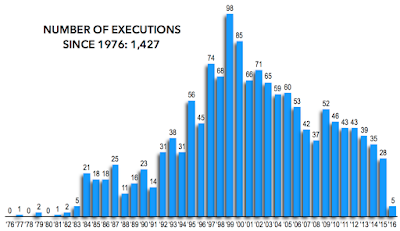

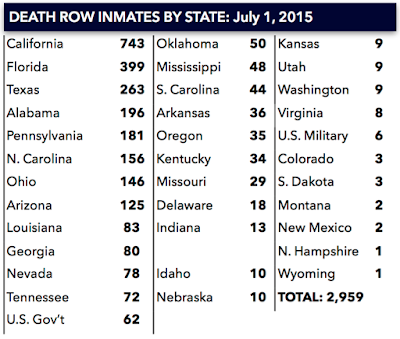

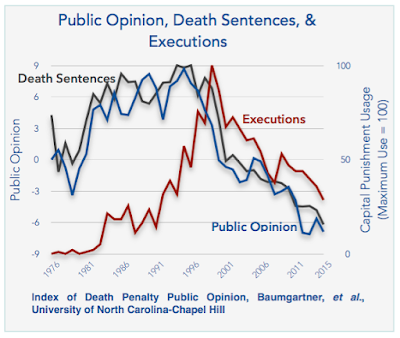
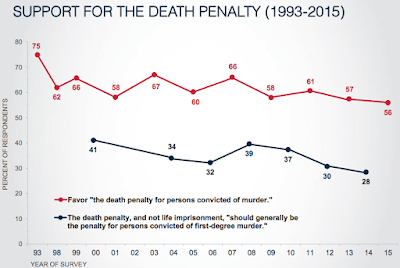
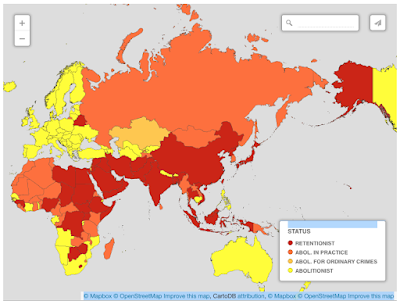
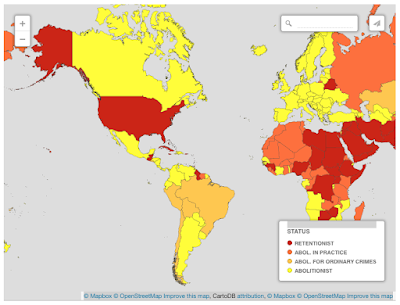
Be the first to comment